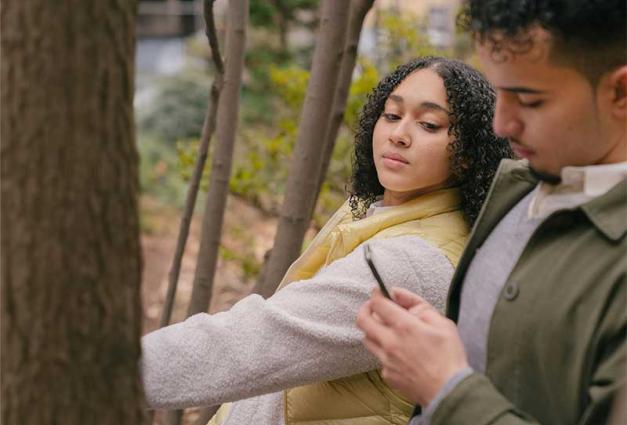In the 1970s, the psychologist Albert Mehrabian suggested that only 7% of the information in speech is contained in the words. The real information, he suggested, was contained in the visual signals we use (the grimaces, the hand-waves, the body movements) and the way we say it (the intonations and inflections, how loudly we speak). These, he suggested, explain 55% and 38%, respectively, of the meaning. His suggestion caused a big stir at the time, but later he was widely criticized for various good reasons, and his ideas have been forgotten.
Our interest in this issue was motivated by the observation that, in a valiant attempt to get at the mechanisms involved in processing communication cues, many studies focus on the meaning encoded in how we say a single word or expression, or even just a laugh. They invariably forget that the words we use are just the bricks that create conversations, and it is the conversations, not the words, that create the elegantly beautiful building of our relationships.
To explore this, we asked a group of native English speakers and a group of native Spanish speakers to listen to audio-only clips of two people engaged in a completely natural conversation. Could they identify the quality of the speakers’ relationship with each other from just hearing what they said and how they said it? We used audio clips representing eight different relationship qualities including such contexts as friends in idle chat mode, friendly banter, provocation, gossip, and annoyance. To avoid boredom, the clips were short (30-60 seconds), but always involved two speakers. Participants listened to clips in only one language (either their own or the other less familiar language), but they listened to three separate versions of the clips. One was the full audio clip; the second was a version in which the words had been masked electronically so that they could hear the rise and fall of the voices but not the words themselves—a bit like sitting at the back of a busy restaurant when you can hear the conversations around you, but not really distinguish what is actually being said; and finally, a version in which the conversation had been converted to pure tones, so that much of the richness of the audio signal was lost, but not the rise and fall of the two distinct voices. They heard all eight clips for each version together in randomized order, so the chances of remembering clips one version to the next was actually quite slight.
We found that, on the full (unaltered) audio clip, people were around 80% accurate on identifying whether the relationship was positive or negative (the criterion in almost all these kinds of experiments), against an expectation of 50% had they responded at random. Moreover, they still managed 75% accuracy with the altered vocal clips, and even 60% accuracy with the pure tone versions (still well above chance). Even when asked to identify the actual type of relationship in individual clips, they performed at much better than chance level: around 30% correct on the full audio clip, and 20% correct on the other two versions—against an expectation of just 12.5% if they had been responding at random. More importantly, both groups of language speakers were as good with the other language as they were with their own.
So it seems that Mehrabian was right after all. Notwithstanding all the criticism of his claims, a lot of the information about social relationships is contained in the nonverbal cues—though our results suggest it is more like 80% than the 93% estimated by Mehrabian. In other words, we certainly get some additional information from the words, but actually we could get by pretty well without them.
That does raise a puzzle. If so little information is contained in the words, why do we have language at all? We could have carried on growling and whinnying at each other, and that would have done just fine. So what difference do the words actually make? I would suggest it allows us to do two thing: specify time and place.
Nonverbal communication, like the equally complex vocal communication of all monkeys and apes, is very good at telling you how I feel about you right now, but it won’t allow me to tell you how I felt about you last month—or would like to feel about you next month. It won’t allow me to suggest that we meet up at the coffee bar on Main Street at four o’clock next Thursday—or that I met Susan and James there last Thursday. What’s more important, perhaps, is that I couldn’t tell you a story that required you to imagine being in another time or place. There would be no novels and no plays, no histories and no community folklore. And it is these that provide an important part of community bonding.
For Further Reading
Dunbar, R. I. M., Robledo del Canto, J.-P., Tamarit, I., Cross, I., & Smith, E. (2021). Nonverbal auditory cues allow relationship quality to be inferred during conversations. Journal of Nonverbal Behavior (2022). https://doi.org/10.1007/s10919-021-00386-y.
Robin Dunbar is Professor of Evolutionary Psychology at the Department of Experimental Psychology, University of Oxford, UK, and he studies social evolution in humans and other primates.




